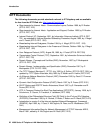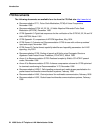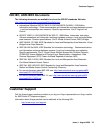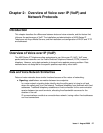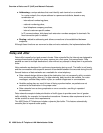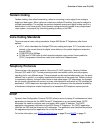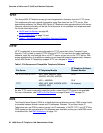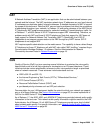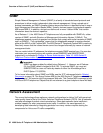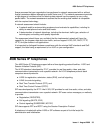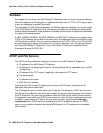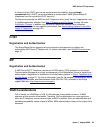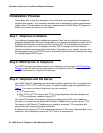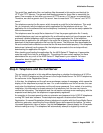
Overview of Voice over IP (VoIP) and Network Protocols
30 4600 Series IP Telephone LAN Administrator Guide
TFTP
The Avaya 4600 IP Telephones can get useful application information from the TFTP server.
The telephones also can upgrade themselves using files stored on the TFTP server. After
downloading software, the Avaya 4600 Series IP Telephones can operate without a file server.
However, some functionality can be lost if the file server is not available for a telephone reset.
For further information, see:
● DHCP and File Servers on page 59,
● TFTP (H.323 Only) on page 74, and
● Table 1: File Servers and Compatible Telephone Software.
HTTP
HTTP is potentially a more secure alternative to TFTP, particularly when Transport Layer
Security (TLS) is used to create HTTPS (Secure HTTP). You can store the same application
software, script file, and settings file on an HTTP server as you can on the TFTP server. With
proper administration, the telephone seeks out and uses that material appropriately. However,
not all 4600 Series IP Telephones support HTTP, as indicated in Table 1
.
As with TFTP, some functionality might be lost by a reset if the HTTP server is not available.
For more information, see DHCP and File Servers
on page 59 and HTTP on page 76.
DNS
The Domain Name System (DNS) is a distributed Internet directory service. DNS is used mostly
to translate between domain names and IP addresses. Release 1.5 and later Avaya IP
Telephones can use DNS to resolve names into IP addresses. In DHCP, TFTP, and HTTP files,
DNS names can be used wherever IP addresses were available as long as a valid DNS server
is identified first. See DNS Addressing
on page 110.
Table 1: File Servers and Compatible Telephone Software
File Server IP Telephone Models
IP Telephone Software
Release Number
HTTP, HTTPS, or TFTP 4601, 4602, 4602SW, 4620,
4620SW, 4621SW, 4622SW
4601+, 4602SW+
R2.2+
R2.6
TFTP 4606, 4612, 4624, 4625SW, 4630,
4630SW, 4690
All releases



